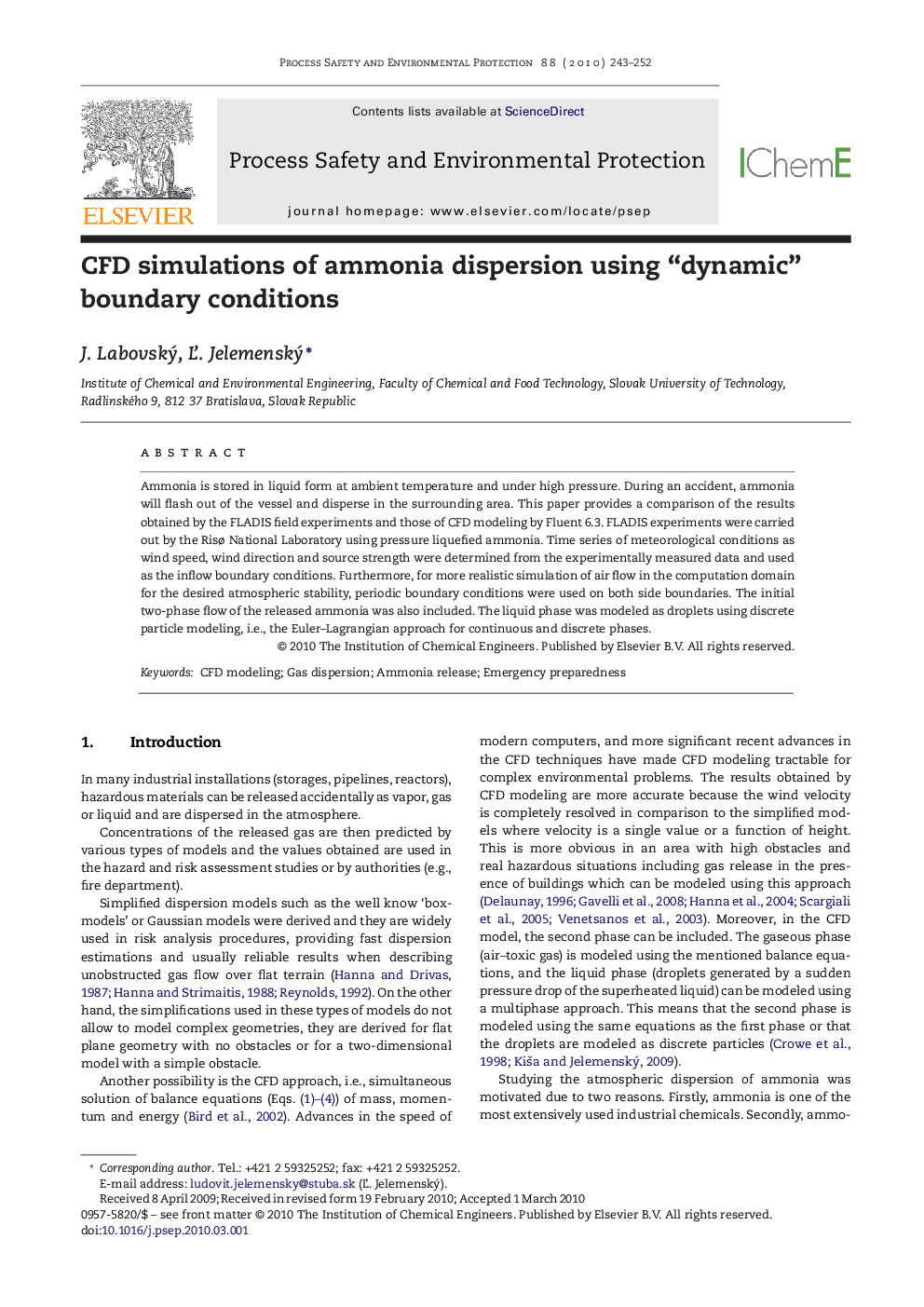| Article ID | Journal | Published Year | Pages | File Type |
|---|---|---|---|---|
| 588667 | Process Safety and Environmental Protection | 2010 | 10 Pages |
Ammonia is stored in liquid form at ambient temperature and under high pressure. During an accident, ammonia will flash out of the vessel and disperse in the surrounding area. This paper provides a comparison of the results obtained by the FLADIS field experiments and those of CFD modeling by Fluent 6.3. FLADIS experiments were carried out by the Risø National Laboratory using pressure liquefied ammonia. Time series of meteorological conditions as wind speed, wind direction and source strength were determined from the experimentally measured data and used as the inflow boundary conditions. Furthermore, for more realistic simulation of air flow in the computation domain for the desired atmospheric stability, periodic boundary conditions were used on both side boundaries. The initial two-phase flow of the released ammonia was also included. The liquid phase was modeled as droplets using discrete particle modeling, i.e., the Euler–Lagrangian approach for continuous and discrete phases.
